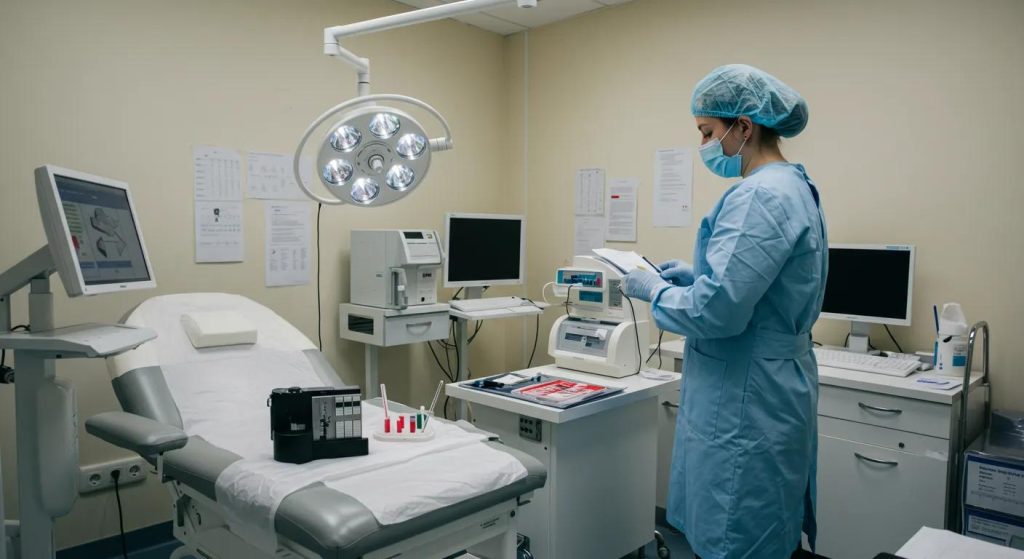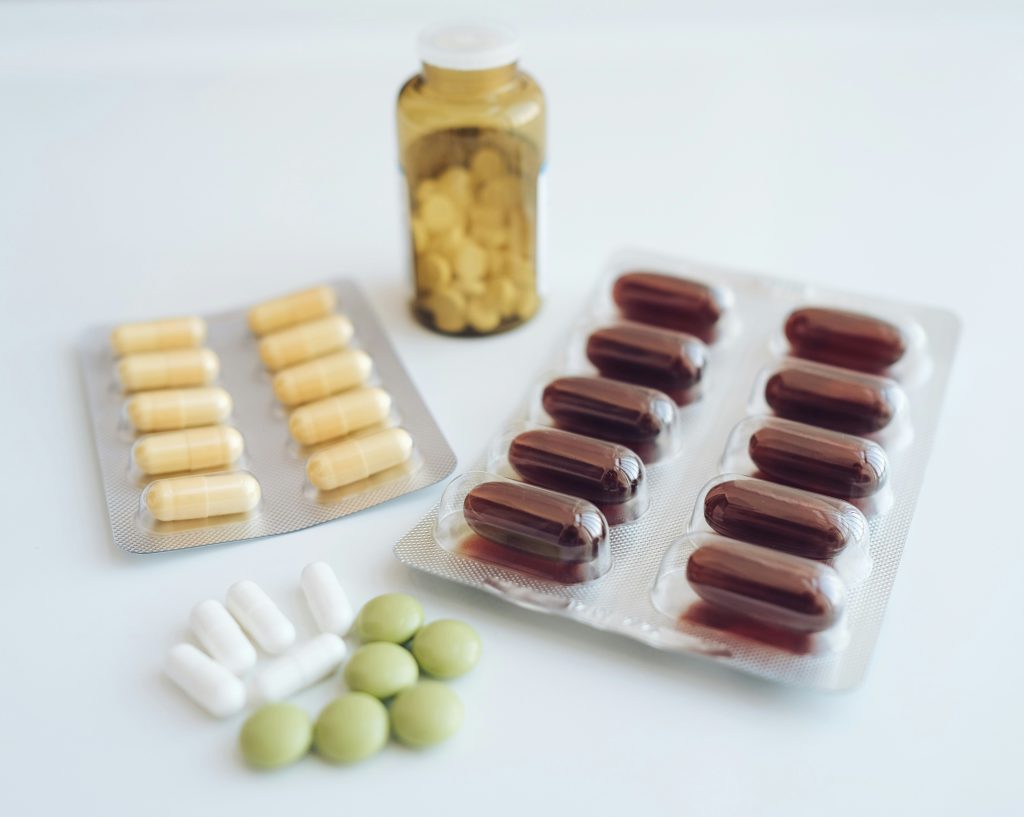Table of Contents
ToggleInsights on Preparing for Your Semen Analysis Test

Preparing for a semen analysis test is essential for accurate results when evaluating male fertility. This diagnostic test plays a crucial role in assessing parameters such as sperm count, motility, morphology, and volume. For those planning to book lab test services through LabTestsDubai.com, understanding preparation steps and factors affecting results helps prevent skewed data and potential re-testing. This comprehensive article guides patients and healthcare professionals through each step—from lifestyle modifications and abstinence guidelines to sample collection and result interpretation—with an emphasis on medically reviewed, evidence-backed procedures to ensure reliable insights for diagnosis and treatment planning.
Each section below addresses specific aspects of semen analysis preparation and test performance. Expert advice from pathologists and urologists is integrated to optimize test accuracy and clarify result interpretation.
Transitioning into the main content, the article covers essential preparatory steps, the testing process, and guidance on interpreting the findings.
What Are the Essential Steps to Prepare for a Semen Analysis Test?
Proper preparation is key to ensuring that a semen analysis accurately reflects your reproductive health. The primary steps involve following strict abstinence guidelines, making important lifestyle changes, avoiding certain medications, and steering clear of substances that might interfere with results.
How Long Should You Abstain Before a Semen Analysis?
It is recommended to abstain for 2 to 7 days before the test. This period allows sperm concentration and overall semen quality to remain stable. Abstaining for less than 2 days may result in higher fluid volume accompanied by reduced quality, while periods longer than 7 days might decrease motility. Medical studies support that this window yields a representative sample of a man’s fertility status and enables consistent comparison with standardized reference ranges.
What Lifestyle Changes Improve Semen Quality Before Testing?
A healthy lifestyle is crucial for optimal semen quality. A balanced diet rich in antioxidants, vitamins (such as vitamin C, vitamin E, and zinc), and omega-3 fatty acids supports sperm health. Regular, moderate physical exercise improves blood flow and hormonal balance, which assists in sperm production. Stress reduction techniques like mindfulness and ensuring adequate sleep help modulate cortisol levels. Additionally, avoiding exposure to environmental toxins like pesticides and heavy metals and maintaining a healthy weight contribute to better semen parameters and long-term reproductive health.
Which Medications and Supplements Should You Avoid Before the Test?
Certain medications and supplements can interfere with semen analysis results. It is important to consult your healthcare provider before stopping any prescribed medications. Anabolic steroids, testosterone supplements, and some antifungal or anti-inflammatory drugs can disrupt hormonal balance and reduce sperm production. Over-the-counter supplements with high doses of vitamin E or herbal extracts, such as ginseng, may also affect sperm quality. Following your provider’s guidance on medication use helps ensure an uncontaminated sample that reflects your natural reproductive function.

What Substances Should Be Avoided Before Semen Collection?
In the days leading up to your test, avoid excessive alcohol, recreational drugs, and tobacco, as these can negatively impact semen quality. High caffeine intake may temporarily affect sperm motility. In addition, avoid lubricants that contain spermicidal agents, since they can alter sperm count and morphology. Limiting these substances ensures the sample remains uncompromised and yields a clear, medically reviewed diagnosis of your reproductive potential.
How Is the Semen Analysis Test Performed and What to Expect?
Once preparatory steps are complete, understanding the test procedure can help alleviate anxiety and ensure a smooth collection process. Semen analysis is a non-invasive procedure performed in a controlled clinical environment. The sample is typically collected through masturbation in a private room, although specialized collection condoms during sexual intercourse may be used if recommended by the lab.
What Are the Common Semen Collection Methods?
The most common method is masturbation into a sterile container provided by the laboratory. In certain situations, home collection may be allowed if the sample is transferred to the lab within a specific timeframe. For couples facing challenges with sample collection, special collection condoms may be used; however, these should be approved by the provider to avoid contamination from lubricants.
How Should You Collect and Handle the Semen Sample?
Accurate semen analysis depends on proper collection and handling. Before collecting the sample, it is important to wash your hands and genital area to reduce contamination risks. Use only the sterile container supplied by the provider, ensuring the collection is done in a dry and clean manner without any lubricants unless instructed otherwise. Immediately after collection, the sample should be kept at body temperature (around 37°C/98.6°F) and delivered to the lab within one hour. Any delays or temperature fluctuations may affect motility and degrade sperm quality, so strict adherence to the lab’s guidelines is essential.
How Long Does the Semen Analysis Procedure Take?
Once the sample reaches the laboratory, the analysis typically takes 30 to 60 minutes. The process involves evaluating sperm count, motility, morphology, volume, and pH. Modern computerized systems help quantify these characteristics and compare them against reference ranges. Although the examination itself is brief, the overall process—including sample processing and result review by the healthcare provider—may take several days.
What Parameters Does a Semen Analysis Test Measure?
A semen analysis covers several critical parameters beyond simple volume. These measures collectively provide a comprehensive evaluation of male fertility and the overall health of the reproductive system.
What Is Sperm Count and Why Is It Important?
Sperm count measures the concentration of spermatozoa in the ejaculate (typically per milliliter). A normal sperm count usually exceeds 15 million sperm per milliliter. Low sperm count, known as oligozoospermia, can significantly hinder natural conception. Variations in sperm count may indicate issues such as hormonal imbalances, infections, or toxin exposure, making regular monitoring important for early detection and intervention.
How Is Sperm Motility Assessed?
Sperm motility is evaluated by determining the percentage of sperm that actively move, as well as the quality of their movement. For sperm to fertilize an egg, they must traverse the female reproductive tract. Laboratories classify motility into progressive (forward movement), non-progressive (inefficient movement), and immotile (non-moving). Reduced motility may signal problems such as varicocele, oxidative stress, or adverse lifestyle factors.

What Does Sperm Morphology Indicate?
Sperm morphology examines the shape and structure of sperm cells under a microscope. Abnormal morphology—such as misshapen heads or midpieces—can impair the sperm’s ability to penetrate the egg, even when count and motility are normal. Consistent abnormalities in morphology can indicate the need for further diagnostic testing and potential corrective treatments.
Why Is Semen Volume Measured?
Measuring semen volume helps determine the total fluid output during ejaculation, which in turn affects the concentration of sperm. A volume of 1.5 mL or more is considered normal, and deviations may suggest issues such as retrograde ejaculation, blockages, or hormonal problems. Variations in volume provide additional clues to possible underlying conditions.
How Do You Interpret Normal and Abnormal Semen Analysis Results?
Interpreting semen analysis results requires a solid understanding of normal ranges alongside the clinical significance of any deviations. Each measured parameter—from sperm count to morphology—is compared with established benchmarks to determine overall fertility status.
What Are the Normal Ranges for Semen Analysis Parameters?
Normal ranges are typically based on global health guidelines. For example, a sperm concentration of more than 15 million/mL, motility of at least 40% (with progressive movement), and normal morphology in 4% or more sperm are common standards. Semen volume should be at least 1.5 mL, though slight variations may occur depending on the laboratory’s criteria.
What Do Low Sperm Count and Poor Motility Mean?
A low sperm count (oligozoospermia) combined with poor motility (asthenozoospermia) can drastically reduce the likelihood of fertilization. These conditions may stem from genetic factors, hormonal imbalances, infections, environmental toxin exposure, or lifestyle issues. Abnormal results typically prompt further evaluations and targeted interventions to improve sperm production and performance.
How Should You Understand Abnormal Sperm Morphology?
Abnormal sperm morphology, or teratozoospermia, indicates a higher percentage of sperm with atypical shapes. This can hinder the sperm’s ability to fertilize an egg, even if the count and motility are within normal limits. Persistent abnormal morphology often requires additional testing to rule out genetic or systemic problems.
When Should You Consult a Specialist About Your Results?
Consult a fertility specialist or urologist if any semen parameters fall outside normal ranges or if you have ongoing concerns about reproductive health. Early specialist intervention can help determine whether abnormalities are temporary or symptomatic of conditions such as varicocele, hormonal imbalances, or genetic disorders. Based on these findings, follow-up tests and tailored treatments can be advised.
What Are Common Causes of Male Infertility Related to Semen Analysis?
Male infertility is influenced by a mix of genetic, lifestyle, hormonal, and environmental factors. Identifying common causes of altered semen analysis parameters is important for early treatment and improved outcomes.
How Do Hormonal Imbalances Affect Semen Quality?
Hormonal imbalances, including low testosterone or irregular levels of follicle-stimulating hormone (FSH) and luteinizing hormone (LH), can impair sperm production. Conditions like hypogonadism, characterized by insufficient testosterone, are linked to reduced sperm count and quality. Hormonal evaluations are often essential when test results indicate poor performance, guiding targeted therapies such as hormone replacement.
What Lifestyle Factors Contribute to Male Infertility?
Lifestyle choices play a significant role in determining semen quality. Smoking, heavy alcohol consumption, obesity, and a sedentary lifestyle are associated with reduced sperm count and motility. Exposure to excessive heat, toxins, or even tight clothing can impair testicular function. Additionally, stress and poor sleep disrupt hormonal balances critical for sperm production. Addressing these factors through improved diet, regular moderate exercise, and stress management is essential for reproductive health.
How Do Genetic and Medical Conditions Impact Semen Analysis?
Genetic abnormalities, such as Y chromosome microdeletions or Klinefelter syndrome, can directly affect sperm production and quality. Medical conditions like varicocele, infections, and autoimmune disorders may cause inflammation and damage to the reproductive system. Chronic illnesses like diabetes, which affect hormonal and vascular health, can also alter semen parameters. Comprehensive evaluations, including genetic screening and a detailed medical history, are recommended to identify these factors and determine appropriate treatments.
What Treatment and Lifestyle Options Can Improve Semen Quality?
Improving semen quality often calls for a multi-pronged approach that combines medical treatments, dietary adjustments, and lifestyle changes. Addressing underlying health issues while adopting healthier daily habits is crucial for enhancing overall sperm quality.
What Medical Treatments Are Available for Male Infertility?
Medical treatments for male infertility may include hormonal therapy in cases of testosterone or reproductive hormone imbalances. Surgical interventions, for example to correct varicocele, may be necessary when anatomical abnormalities are detected. Assisted reproductive techniques (ART) such as intracytoplasmic sperm injection (ICSI) and in vitro fertilization (IVF) can provide solutions for severe infertility challenges. Additionally, medications to treat infections or inflammation may be prescribed based on individual test findings.
How Can Diet and Exercise Enhance Sperm Health?
A nutrient-rich diet and regular physical activity can have a substantial impact on sperm quality. Diets high in antioxidants (from fruits, vegetables, nuts, and whole grains) help combat oxidative stress on sperm cells. Micronutrients like zinc, selenium, and vitamin E have been linked to improved motility and morphology. Regular, moderate exercise enhances blood flow and hormone regulation; however, excessive training without proper rest can have the opposite effect. Combining steady dietary improvements with balanced exercise routines can yield measurable benefits in reproductive parameters.

What Are Practical Tips to Maintain Fertility Before Testing?
Alongside medical and lifestyle treatments, practical measures can help maintain fertility in the weeks leading up to the test. Ensure a 2-7 day abstinence period, reduce exposure to extreme heat (avoid hot baths or saunas), and engage only in activities that do not risk contaminating the sample. Staying well-hydrated and following a balanced, nutrient-rich diet is also important. Avoid recreational drugs and excessive caffeine shortly before the test to help ensure that your sample reflects your true reproductive health.
What Are Frequently Asked Questions About Preparing for a Semen Analysis Test?
The FAQs below address common concerns and provide additional preparation tips.
What Should I Avoid Before a Semen Analysis?
Avoid excessive alcohol, smoking, recreational drugs, and any medications known to affect sperm production. Refrain from using lubricants containing spermicidal agents, as they may interfere with results. A stress-free, clean environment is ideal for accurate sample collection.
How Accurate Is a Semen Analysis Test?
Semen analysis tests are generally accurate when proper collection and handling protocols are followed. However, differences in abstinence duration, collection methods, and sample handling can affect outcomes. Repeat testing is often recommended if initial results show abnormalities.
Can Medications Affect Semen Analysis Results?
Yes, medications such as hormonal treatments, anti-inflammatory drugs, and some over-the-counter supplements can affect sperm count, motility, and morphology. It is important to discuss any medications you are taking with your healthcare provider before the test.
How Should I Prepare Mentally and Physically for the Test?
Mental and physical readiness includes reducing stress through relaxation techniques and ensuring you get adequate sleep. A healthy diet and light exercise before the test can further support optimal semen quality. Following all pre-test guidelines helps ensure your sample accurately represents your reproductive health.
Comprehensive Nutritional and Lifestyle Effect Table
Before proceeding to the FAQs section, refer to the table below that summarizes factors affecting semen quality and recommendations for improvement:
| Factor | Impact on Semen Quality | Recommended Improvement | Medical Term |
|---|---|---|---|
| Abstinence Period | Stabilizes sperm concentration | 2-7 days abstinence | Oligozoospermia prevention |
| Diet (Antioxidants, Vitamins) | Reduces oxidative stress | Increase intake of fruits and vegetables | Oxidative stress reduction |
| Physical Exercise | Enhances hormonal balance | Moderate exercise; avoid overtraining | Hormonal regulation |
| Avoidance of Toxins | Prevents cellular damage | Minimize exposure to pollutants | Cellular protection |
| Medication Management | Prevents hormonal imbalances | Consult provider about drug effects | Endocrine stability |
This table guides you in optimizing your semen analysis results by focusing on relevant lifestyle and nutritional strategies, thereby encouraging better reproductive health outcomes.
Frequently Asked Questions
Q: What is the ideal abstinence period before a semen analysis? A: The ideal abstinence period is between 2 and 7 days to ensure stable sperm concentration and activity.
Q: Can lifestyle changes really improve semen parameters? A: Yes, lifestyle modifications such as a balanced diet, moderate exercise, and stress reduction can significantly improve semen parameters by promoting overall sperm health.
Q: How does medication impact semen analysis? A: Certain medications, including hormonal therapies and anti-inflammatory drugs, may adversely affect sperm count, motility, and morphology. Discuss any current medications with your healthcare provider before testing.
Q: What are some common collection errors that affect test accuracy? A: Common errors include contamination from lubricants, failure to maintain the sample at body temperature, and delays in delivering the sample to the lab. Adhering to collection protocols minimizes these risks.
Q: Why is it important to review semen analysis results with a specialist? A: A specialist can interpret your results in the context of overall reproductive health and recommend further tests or treatments if abnormalities such as low sperm count or abnormal morphology are found.
Q: Is home collection acceptable for a semen analysis? A: Yes, home collection is acceptable if the sample is placed in a sterile container and delivered to the lab within one hour while maintained at the proper temperature—always follow your lab’s instructions.
Q: How soon after the test will results be available? A: Results are typically available within a few days once the laboratory has completed the analysis. Your healthcare provider will review the findings and advise on any necessary follow-up.
Final Thoughts
Preparation for a semen analysis test involves strictly following abstinence guidelines, making key lifestyle modifications, and ensuring proper sample collection. These medically endorsed practices improve the reliability of test results and provide a clear picture of male reproductive health. Addressing factors such as hormonal balance, diet, and environmental exposures can help optimize your semen quality. Additionally, consulting with specialists and following precise collection protocols ensures that any detected abnormalities are accurately diagnosed and effectively treated. These steps pave the way for informed decision-making and improved fertility management.

